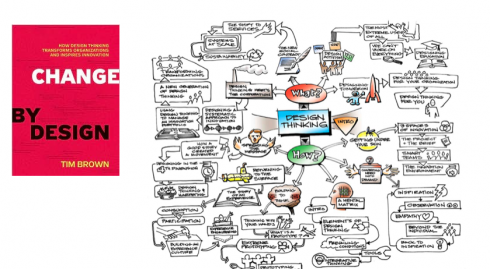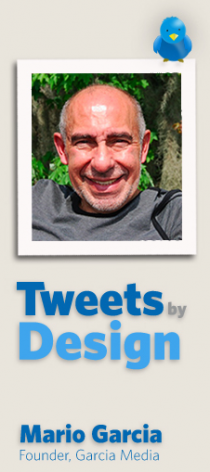TAKEAWAY: The new book, Change by Design, by Tim Brown, offers dozens of examples to prove the value of design thinking. The parallels to our media design are obvious. I highlight some.
Looking at our craft from a different perspective

I am half way through a most provocative book titled Change by Design, by Tim Brown, the CEO and president of IDEO, ranked among the world’s top ten most innovative companies. Among IDEO”s achievements: the first mouse for Apple, and the Palm V.
Brown’s book excels because he manages to combine theory with clearly presented examples of case studies, or sometimes just passing references to projects in which he and his team have been involved. He writes with emotion and intellect, and I find myself highlighting thoughts for which I can find immediate applications in our media design world.
I also found myself expressing agreement with my head, as I had been in identical situations over the past 40 years consulting with more than 550 media organizations worldwide. Brown described his experience with the design of a new bike, but it could have been that one weekly magazine or the conversion from broadsheet to tabloid for a newspaper somewhere. “Eerie,” I found myself saying about the very precise and identical situations.
I hope to discuss some of my “highlighted statements” in this blog, but must do so through a series of postings.
Brown’s book is all about design thinking, the centerpiece of Brown’s theories, and one that rings perfectly familiar for all of us in the creative fields of design—-regardless of what is being designed.
First, a definition of “design thinking,” according to Brown:
Design thinking begins with skills designers have learned over many decades in their quest to match human needs with available technical resources within the practical constraints of business……Design thinking taps into capacities we all have but that are overlooked by more conventional problem-solving practices. It is not only human centered; it is d of itselfeeply human in and of itself. Design thinking relies in our ability to be intuitive, to recognize patterns, to construct ideas that have emotional meaning as well as functionality, to express ourselves in media other than words or symbols.
As I read the introductory chapter of Brown’s book, I make a note on the margin of the page:
In our business of designing newspapers and magazines, we often use design as an end in itself. We create models. We test prototypes. We tweak. We implement. We have done this for decades. In the process, perhaps we failed to see that it was not the newspaper or the magazine that needed to be redesigned, but the industry as a whole.
Design thinking emphasizes this type of thinking, or as Brown describes it “the power of design not as a link in a chain, but as the hub of a wheel”.
Those with a traditional definition of design in their system will be slightly shocked to read that Brown’s concept of design thinking is “about more than style”.
The crisis in which our industry finds itself right now is the most opportune time for us to pull ourselves out of our comfort zones
(read “media designers”), to transform ourselves into design thinkers, taking design upstream. Sort of innovation riding on the coattails of survival. Not a bad thing.
Note: I am advancing rapidly in the reading of Brown’s book, and I hope to post several blog entries drawing parallels between Brown’s experience in the world of industrial/business design——he and his team find themselves creating kitchen gadgets, or a low tech weekend bicycle—-and its very appropriate connection with all that we do as we design media.
It would be fascinating to take Tim Brown along on one of our projects. His book emphasizes the importance of teams, so I can see how his presence in a media design project could bring another way to look at the process. For so many editors and designers who work following linear thinking, Brown could probably suggest what he refers to as “the mind map”—while linear thinking is all about sequences, he writes, mind maps are about connections.

Who is Jacky?
Jacky belongs to Frank Deville. The Luxembourg-based pooch is an “avid reader” of the German newspaper, Bild Am Sonntag. Every Sunday Jacky picks stories and interesting graphics in Bild Am Sonntag , the German newspaper.

Follow me at www.twitter.com/tweetsbydesign
Follow the Marios

Two Marios. Two Views.
Follow Mario Jr. and his blog about media analysis, web design and assorted topics related to the current state of our industry.
http://garciainteractive.com/
Visit Mario Sr. daily here, or through TweetsByDesign (www.twitter.com/tweetsbydesign)
In Spanish daily: The Rodrigo Fino blog
:
To read TheRodrigoFino blog, in Spanish, go:
https://garciamedia.com/latinamerica/blog/
TheMarioBlog post #397